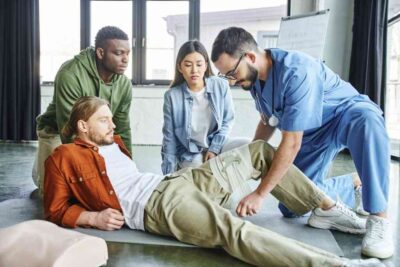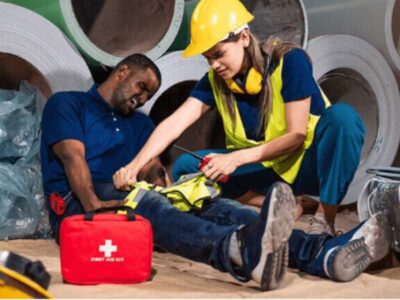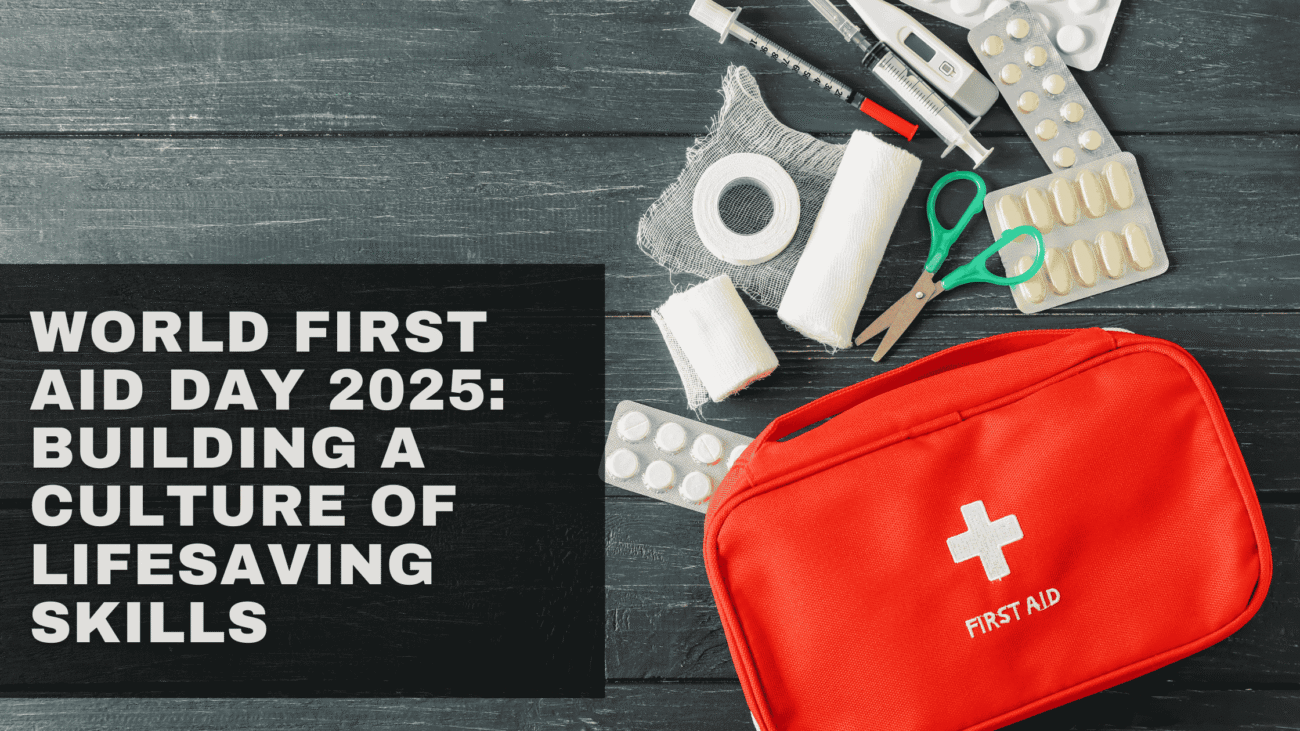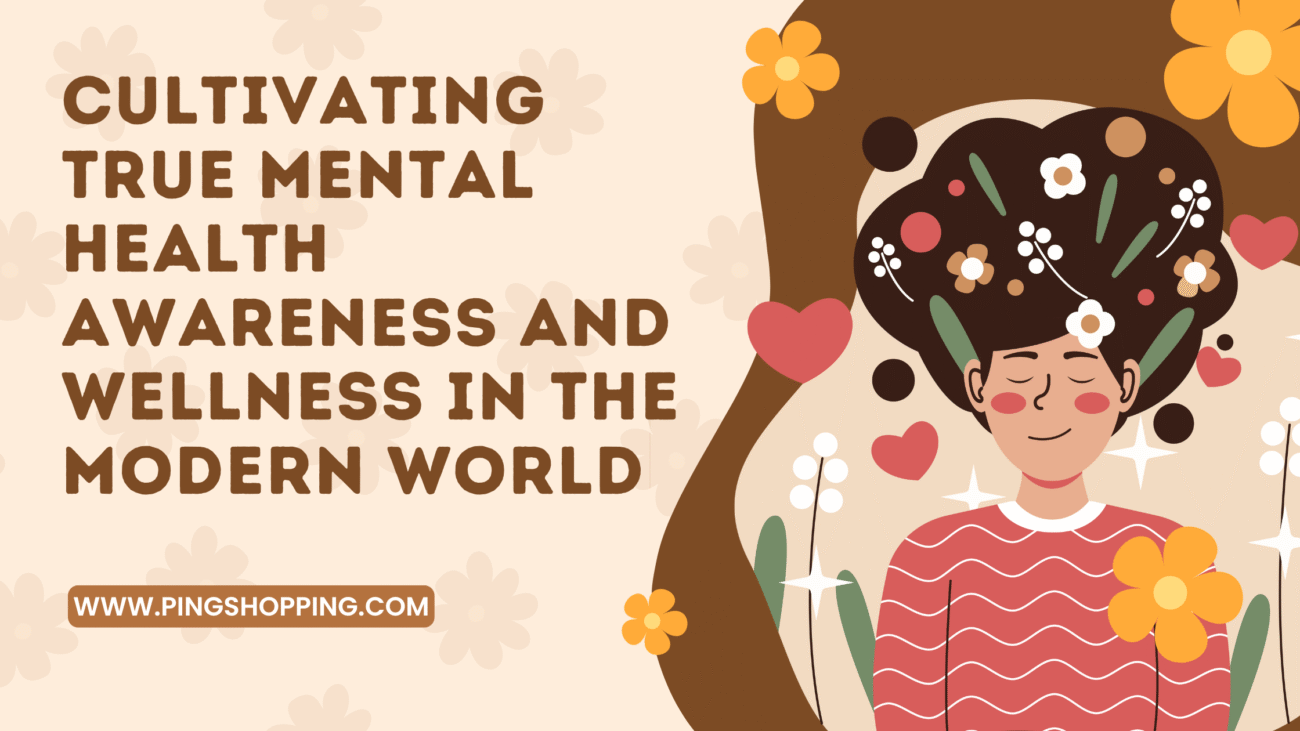World First Aid Day is celebrated every year on the second Saturday of September. The movement was first started by the International Federation of Red Cross and Red Crescent Societies (IFRC) in 2000. But why was this introduced? We’ll figure it out in this article.

On September 13, 2025, World First Aid Day is going to be celebrated with the theme “First Aid and Climate Change.“, pointing to the increased urgency for readiness against extreme weather conditions, natural disasters, and health crises. All these emanate from altered environmental patterns. The key message is straightforward: having basic knowledge of first aid can save many lives when executed properly.
Why First Aid Matters More Than Ever?

Medical experts usually focus on the first five minutes of a situation, which are the most important deciding factor. No matter whether it is cardiac arrest, choking, serious bleeding, or more, within this “golden window”. It decides if an individual can be saved or not. However, in a nation like India with such a big population. Many people are still not aware of the basic first aid methods. In fact, First Aid is not a high-level medicine. It is simple and involves immediate steps to avoid deterioration. Moreover, certain steps can help to avoid deterioration or stabilize a patient. Instructing people in these methods will keep them prepared to deal with both everyday accidents and major catastrophes.
The Philosophy of First Aid
The principles of first aid are based on three primary objectives:
- Save life – take action immediately to avoid death.
- Prevent additional injury – keep the injured person safe from becoming worse.
- Facilitate recovery – assist the body to heal until higher-level care can be provided.
This philosophy is also encapsulated in the ABC concept – Airway, Breathing, and Circulation (or control of bleeding). These easy checkpoints are the beginning of every life-saving response. But first aid is not all technical skills. A first aid giver has to maintain calmness in a crisis and ensure to guard themselves against biological dangers, whether blood or body fluids that may contain infections.
Key First Aid Techniques Everyone Should Learn
If you don’t have any professional certification in basic first aid, here are the ways to help others:
- Check to see if the individual is awake and breathing properly
- Call an emergency ambulance
- For an unresponsive person who isn’t breathing normally, you should try chest compressions (100 times). If holding some training, use rescue breaths after every 30 compressions.
- Apply firm pressure with a clean cloth or bandage to avoid blood loss. In case of severe bleeding, a tourniquet may be required as a last resort.
- For burning, treat the burned area by running it under running water for a minimum of 20 minutes. After that, you should do the dressing with a sterile dressing. Don’t use traditional remedies such as oil, ghee, and toothpaste
- Maintain an open airway for an unconscious person to breathe.
- Immobilize the affected limb with crude splints and minimize unnecessary movement.
Life-Saving First Aid for Emergencies
Emergencies strike unexpectedly, and first aid can be the difference between life and death in situations like:
- Don’t delay CPR for one moment during cardiac arrest because it can double or triple the survival chances.
- Acting fast will prevent death and shock when a person is suffering from severe bleeding.
- Proper first aid limits tissue damage and complications in burns.
- Certain supportive measures can aid in putting aside deterioration in terms of asthma and allergic reactions
- Early resuscitation significantly improves the hope for survival.
The Chain of Survival
In cardiac emergencies, professionals refer to the “Chain of Survival”. The following are the next steps to follow when it comes to the survival in emergency situations:
- Call emergency services.
- Initiate CPR immediately.
- Use an Automated External Defibrillator (AED) if available nearby
Role of Schools, Workplaces, and Communities
Including first aid training in school curriculum and occupational safety programs has the potential to revolutionize whole societies:
- Less impact of accidents.
- A safety and proactive culture.
- Improved confidence among people to respond in emergencies.
- Swifter, more efficient action in case of an incident.
By educating students, workers, and volunteers, societies create a cascading effect where knowledge of saving lives becomes widespread.
First Aid, Health Awareness, and Diagnostics
Preparedness isn’t only about emergency response, but also about learning about one’s health. Routine check-ups and diagnostic tests can identify internal issues such as diabetes, heart disease, etc. For example, being aware that a patient suffers from a cardiac condition may direct the administration of first aid.
Participating in World First Aid Day 2025
There are numerous ways to make a difference with World First Aid Day:
- By enrolling in a certified first aid workshop or course.
- By volunteering with emergency service providers.
- By organizing protests in workplaces or schools.
- Post educational materials and advice on social media.
- Keep your home and office first aid kits fully stocked.
Through participation, people are part of a worldwide movement that puts lifesaving skills first.
Empowering Communities Through First Aid
World First Aid Day observance enforces the belief that saving a life does not require a medical degree but the correct information. As the 2025 theme reminds us, climate change and disaster risk challenges require first aid training more than ever. Let’s share these with our families to help them learn some crucial first aid skills in 2025.





